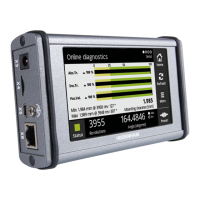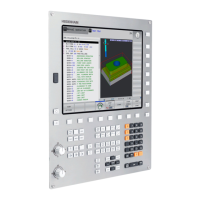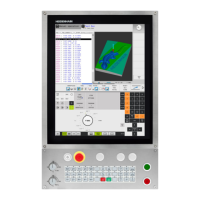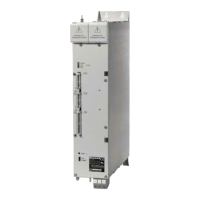HEIDENHAIN iTNC 530 573
14.9 Tilting the Working Plane (Software Option 1)
When tilting the working plane, the TNC differentiates between two
machine types:
Machine with tilting table
You must tilt the workpiece into the desired position for
machining by positioning the tilting table, for example with an L
block.
The position of the transformed tool axis does not change in
relation to the machine-based coordinate system. Thus if you
rotate the table—and therefore the workpiece—by 90° for
example, the coordinate system does not rotate. If you press the
Z+ axis direction button in the Manual Operation mode, the tool
moves in Z+ direction.
In calculating the transformed coordinate system, the TNC
considers only the mechanically influenced offsets of the
particular tilting table (the so-called “translational” components).
Machine with swivel head
You must bring the tool into the desired position for machining by
positioning the swivel head, for example with an L block.
The position of the transformed tool axis changes in relation to the
machine-based coordinate system. Thus if you rotate the swivel
head of your machine—and therefore the tool—in the B axis by
90° for example, the coordinate system rotates also. If you press
the Z+ axis direction button in the Manual Operation mode, the
tool moves in X+ direction of the machine-based coordinate
system.
In calculating the transformed coordinate system, the TNC
considers both the mechanically influenced offsets of the
particular swivel head (the so-called “translational” components)
and offsets caused by tilting of the tool (3-D tool length
compensation).
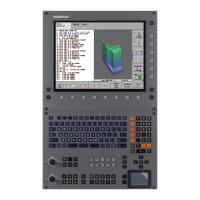
